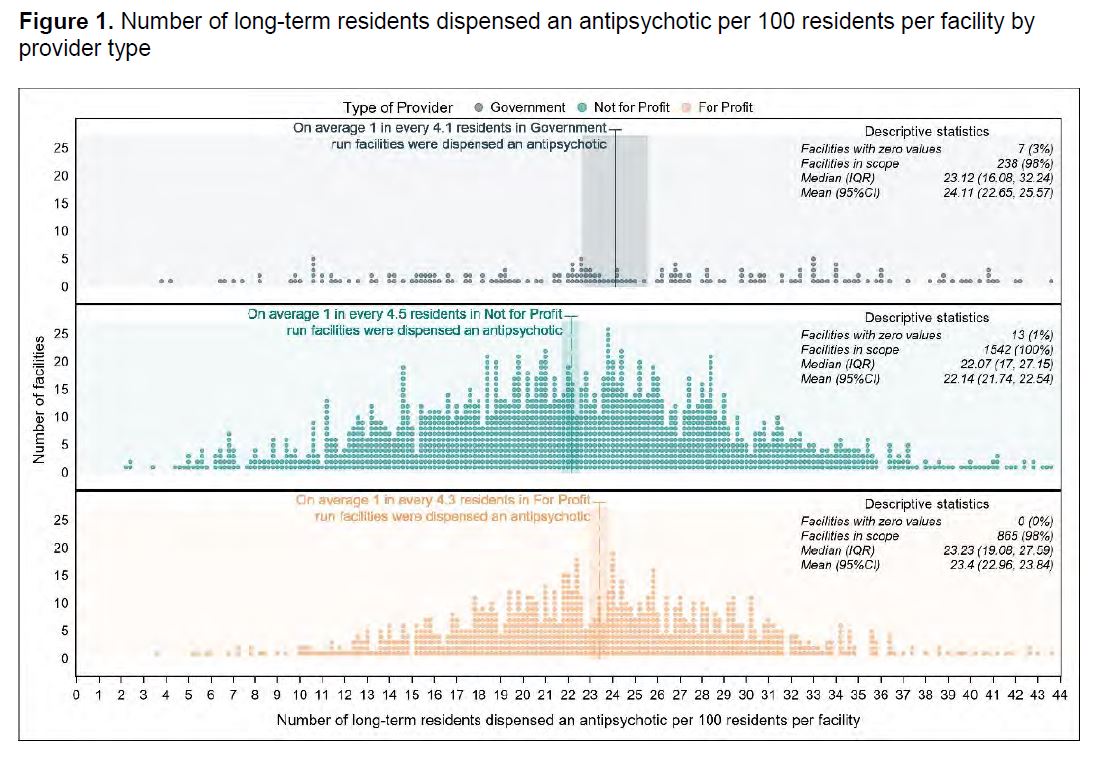The Royal Commission continues its work, even as the 26 February 2021 deadline for the Final Report approaches – and its latest research paper initially appears to be bad news for private operators.
Labelled by the Royal Commission as the most detailed profile of quality in residential aged care that has been published in Australia, the huge 249-page three-part ‘Research Paper 15 – Residential Care Quality Indicator Profile’ brings together over 50 quality indicators about residential care including how the results are distributed across facilities.
The granular datasets – which were collected in different parts of the aged care system – were acquired under the Royal Commission’s legal authority to access data and have not been previously been made available to researchers before.
Key indicators examined include hospital admissions, falls, fractures, pressure injuries, premature death, weight loss, complaints, healthcare and personal care issues, staffing issues, physical environment, food quality, staffing and minutes, use of chemical and physical restraints, reporting of assaults and missing residents and compliance outcomes.
For Profits coming last on quality indicators
These indicators have then been analysed using statistical methods – and the results are not good for the ‘private’ sector.
While Government-run facilities make up just 9% of Australia’s 2,700 aged care services, they had the best average results for 31 indicators, compared to two indicators for Not For Profits (which are 57% of the sector) and one indicator for For Profits (34%).
Not For Profit facilities had stronger average results than For Profits facilities on 25 of the indicators, while For Profits had stronger average results just two.
Some data dates from 2016/17 – or seems skewed
There are issues with the data however. Some of the figures date from 2016/17 – and may not be an accurate representation of today’s care environment.
Some of the data also seems to be skewed, for example, the figures that show Government-run facilities have the highest level of observed physical restraint at 51.0 per 100 occupied beds compared to 39.28 in Not For Profits and 30.56 in For Profits.
“Due to high skewness of the data, in particular the large proportion of facilities with 0 values, the mean is not a good measure of central tendency for this indicator,” the report states.
Unsurprisingly given Victoria and Queensland both have mandatory staffing ratios, Government-run facilities performed best on staffing with 119 nursing minutes per resident compared to 39 minutes in Not For Profits and For Profits.

Not For Profits best on use of antipsychotics – but figures four years old
Not For Profits came out on top on the use of antipsychotics (based on 2016-17 data) with only one in 4.5 residents given antipsychotic medication compared to 4.3 in For Profits and 4.1 in Government-run facilities.
For Profits had the fewest number of chronic opioid users in 2016/17 – one in every 3.6 residents compared to one in 3.4 in Not For Profits and one in 3 in Government-run facilities.
Government-run facilities did receive less complaints – an average of 2.2 per 100 occupied beds compared to 2.72 for Not For Profits and 3.79 for For Profits.
Smaller homes rank better – but so do homes with over 180 beds on some indicators
Smaller sized facilities also came out on top, despite accounting for only 11% of the country’s aged care homes.
Small facilities with one to 30 beds had the best average results for 24 indicators.
But again, the data appears to deliver widely varying findings with facilities with over 180 places returning the best results on six indicators.
Some figures impacted by factors “outside” of providers’ control
The Royal Commission says the research was conducted to improve understanding of quality in the aged care system.
“It also demonstrates the value of making data publicly available at facility level to inform the community about aged care services, support consumer choice, encourage continuous improvement, and foster research and innovation,” it said in a statement.
The report did note that in some instances, the data was influenced by factors outside the control of facilities, for example, acknowledging that a facility submitting a low number of reports may not be meeting its Compulsory Reporting requirements or that a low number of missing residents may indicate a higher use of physical restraints.
Either way, it seems likely the findings will be used to support the argument that smaller homes offer better-quality care – and the ‘marketisation’ of aged care since the 1997 Aged Care Act has impacted on quality.
You can download the papers here.










